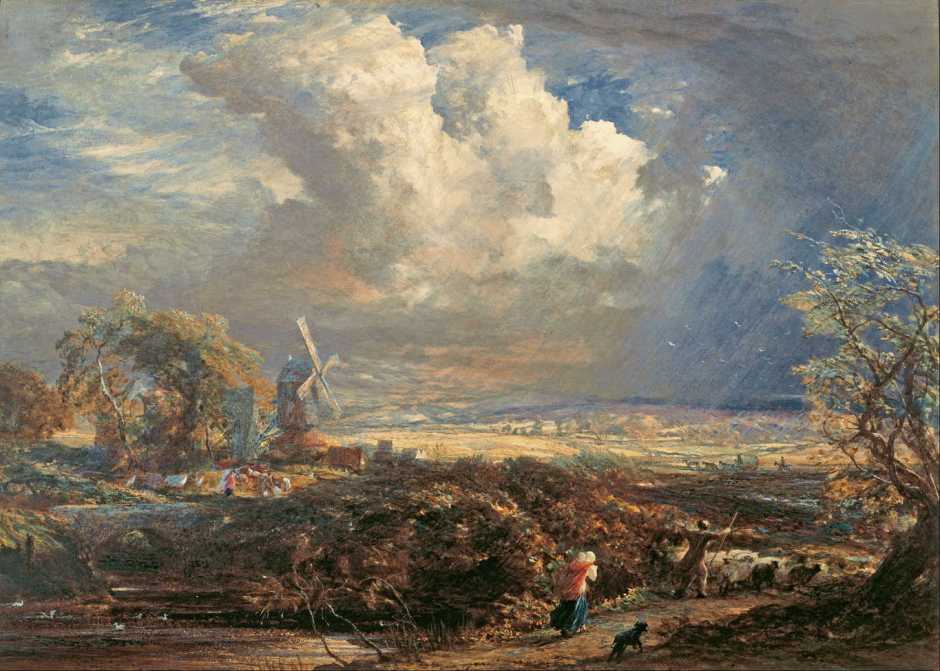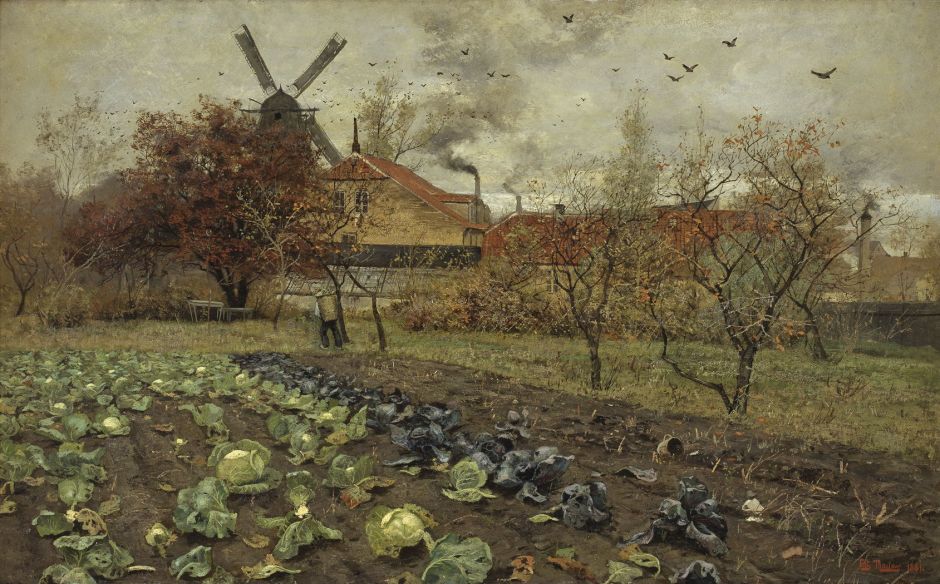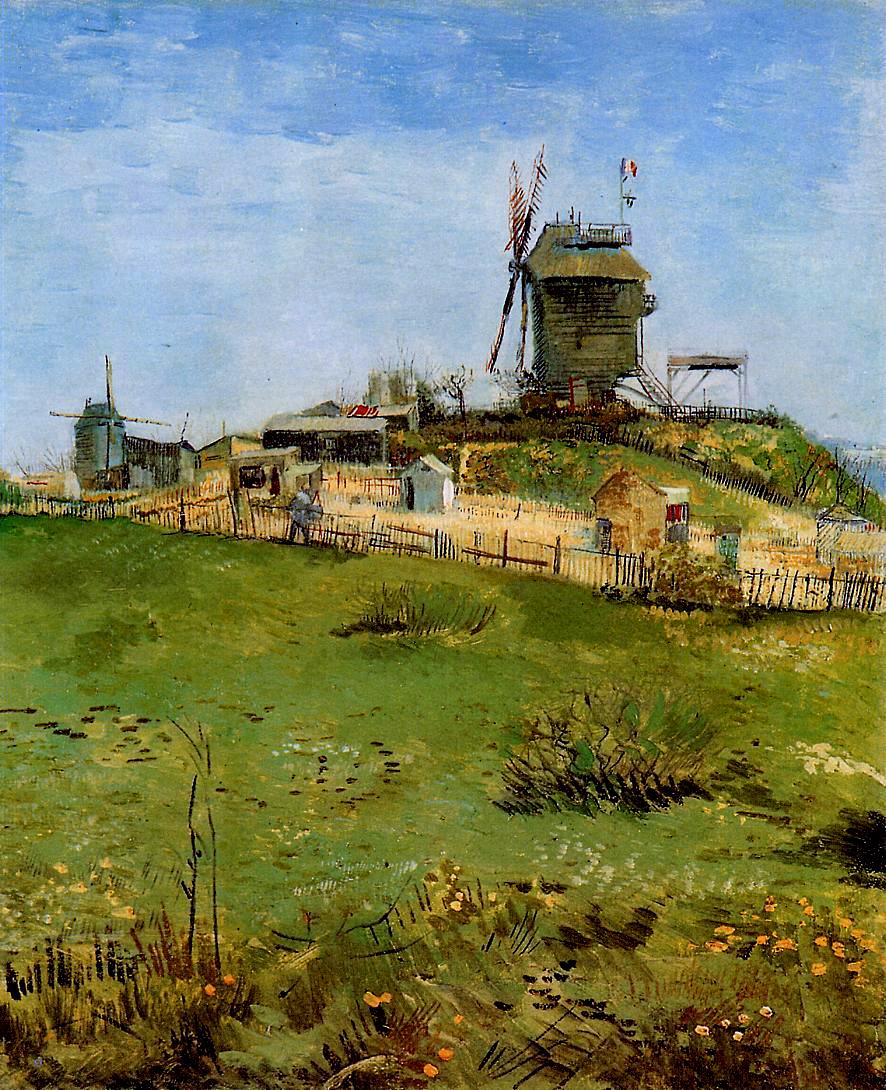In the first article of this pair looking at paintings of windmills, I covered more traditional views up to the first of the pre-Impressionists. This article takes this account from around 1825 up to the birth of modernism just before the First World War.
Although the development of steam power during the nineteenth century brought great changes to many industries, windmills continued to flourish until the middle of the century, and even then their decline was gradual until the Second World War.

Richard Parkes Bonington probably painted Barges on a River in around 1825-6 when he was travelling near the French town of Nantes. The windmill seen behind the trees is a reminder of seventeenth-century Dutch landscape painting.

During his detailed realist period early in his career, Johan Jongkind painted this View of Maassluis in Winter (1848). Following the long tradition of landscape painting in the Netherlands, he sets his horizon low and paints a wonderful winter sky.

Samuel Palmer’s Summer Storm near Pulborough, Sussex from about 1851 also refers to Dutch landscape painting, but in a very Kentish context. A storm is seen approaching the rolling countryside near Pulborough, now in West Sussex. On the left, in the middle distance, a small bridge leads across to a hamlet set around a prominent windmill, whose blades are blurred as they are driven by the wind.

Windmill styles differ outside northern Europe. When Jean-Léon Gérôme travelled down the River Danube in about 1855, he claimed to have witnessed this moving scene of Recreation in a Russian Camp, Remembering Moldavia (1855). A group of Russian soldiers in low spirits is being uplifted by making music, under the direction of their superior. He has captured an atmosphere which few of his other paintings achieved: the marvellous light of the sky, the skein of geese on the wing, and the parade of windmills in the distance all draw together with the soldiers in their sombre greatcoats.

In the following year, Johan Christian Dahl’s Burning Windmill at Stege is an unusual brandje (a painting of fire) following a traditional sub-genre of the Dutch Golden Age. Although painted well before Impressionism, Dahl echoes the red of the flames in the field and trees to the left of the windmill, and even in his signature.

During the winter of 1864, Johan Jongkind returned to the Netherlands, where he painted this Winter View with Skaters, which is more overtly pre-Impressionist.

Jongkind’s watercolour sketch of a Windmill at Antwerp of 1866 is even more painterly.

Claude Monet’s second visit to the Netherlands in 1874 ensured that The Windmill on the Onbekende Gracht, Amsterdam (1874) became a part of the history of Impressionism. This shows a windmill known as Het Land van Beloften, De Eendracht or De Binnen Tuchthuismolen, which was built in the late seventeenth century, and moved to Utrecht just a couple of years after Monet painted it on the banks of the River Amstel.

Frits Thaulow’s painstakingly-detailed View of Amerikavej in Copenhagen (1881) shows a windmill in the background, which is being used to provide power to the industrial site adjacent.

It may not have been Monet who first made the visual association between Dutch windmills and fields of tulips in flower, but his 1886 painting of Tulip Field in Holland must be its best-known depiction in art.

When Vincent van Gogh moved to Paris in 1886, he stayed with his brother Theo in Montmartre. He painted a series of marvellous views of the remaining windmills there, including the most famous of them all, Le Moulin de la Galette (1887), in whose gardens Renoir had painted his Bal du moulin de la Galette a decade earlier.
It was another Dutch painter who took windmills from Impressionism to the modernist styles of the twentieth century: Piet Mondrian.

His gentle nocturne of Oostzijdse Mill on the River Gein by Moonlight from about 1903 is one of several views of windmills that he painted in Impressionist and post-Impressionist style.

When he started experimenting with vibrant colour and patterned brushstrokes in about 1908, this painting of a Mill in Sunlight marks his point of departure.
By the end of the First World War, milling had become more centralised, and the hundreds of thousands of small windmills across northern Europe lost their business. A few have been preserved, and some are still used for specialist products such as stoneground flour. But the unmistakable sight of a windmill on the skyline had been lost from much of the land.

